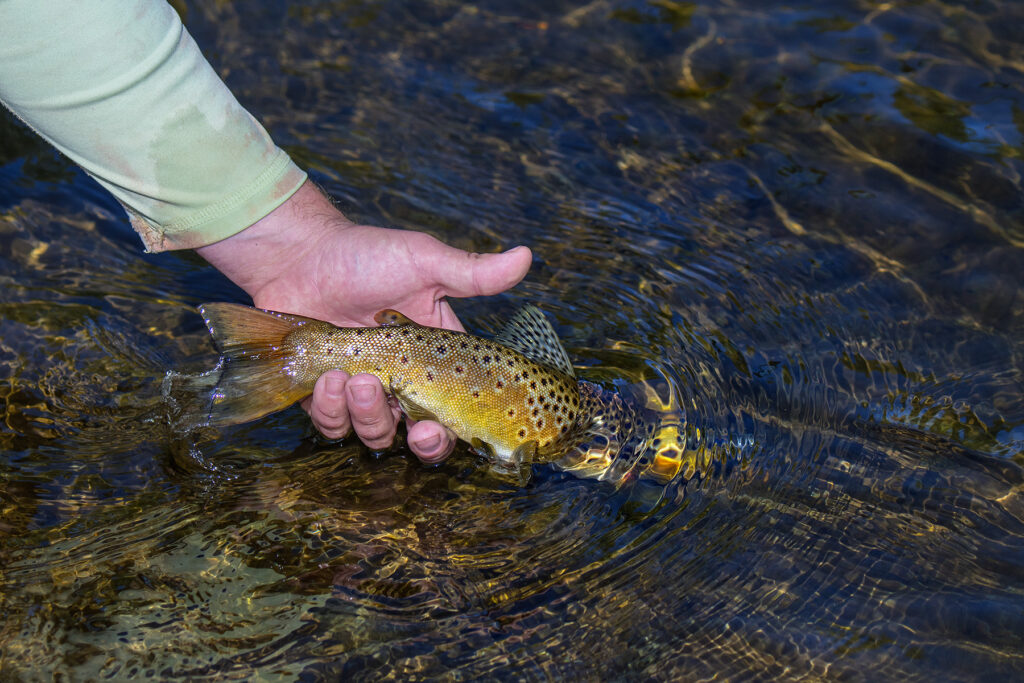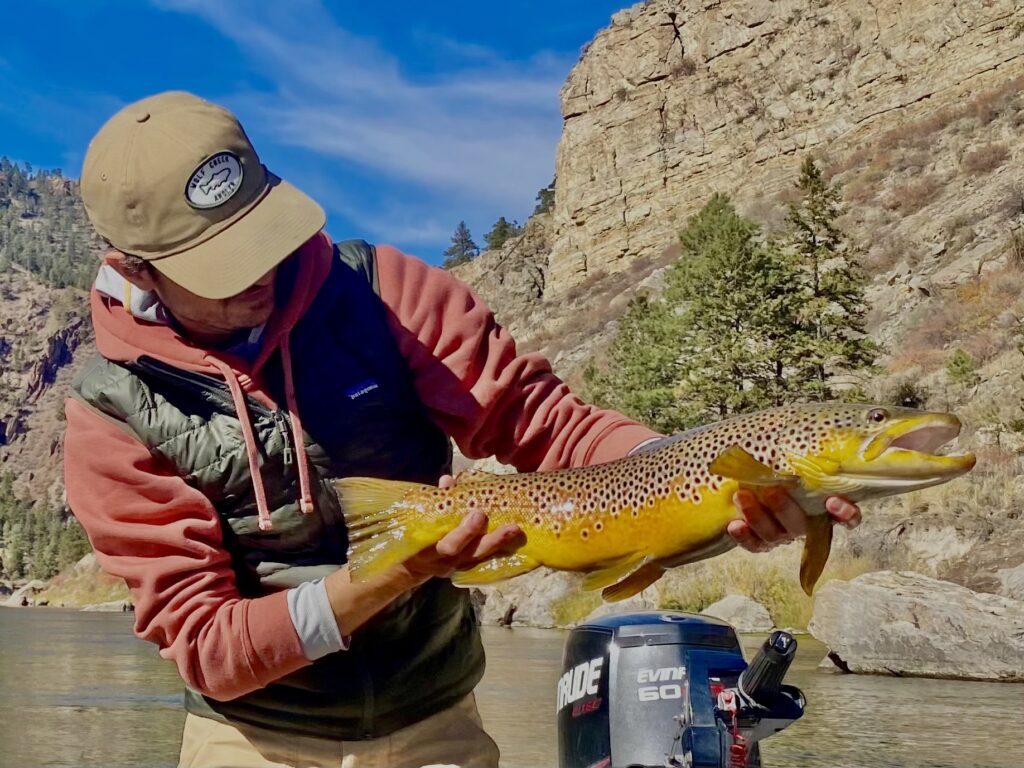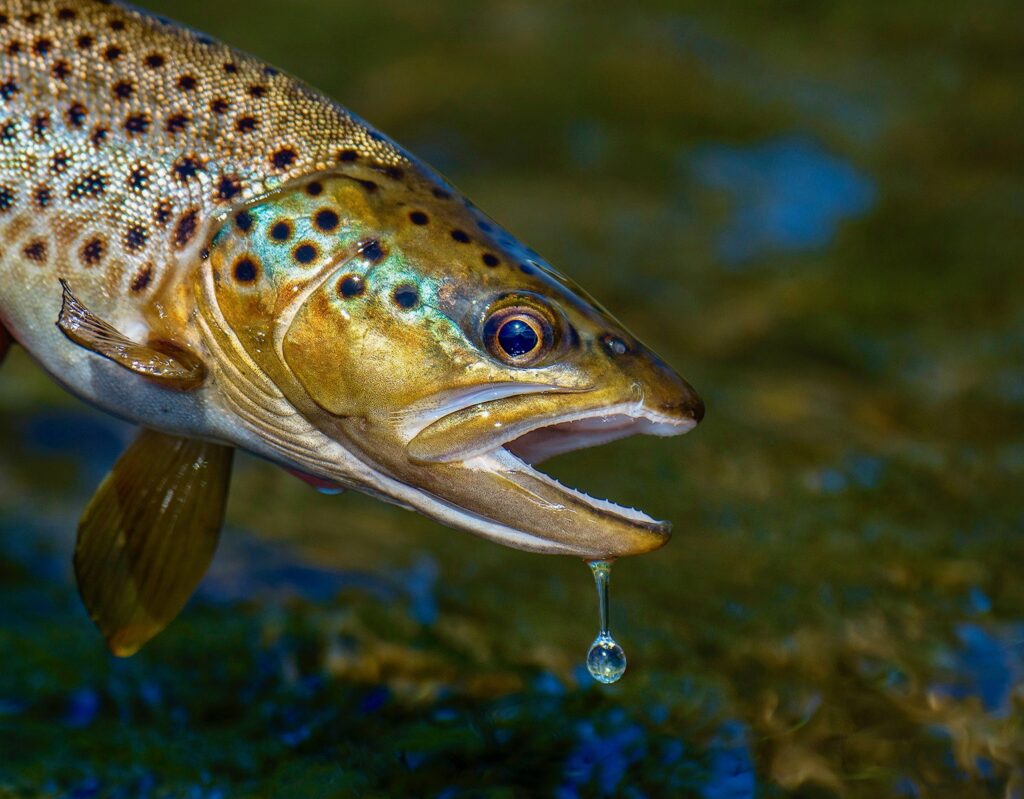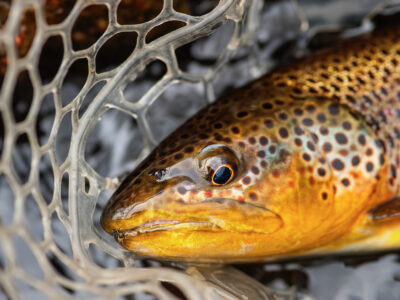The emergence of the Pale Morning Dun on the Missouri River is a magical time and one of the most anticipated events in Montana. Watching the emergence of these mayflies and trout rising is captivating. PMDs hatch across many rivers in Montana, but what happens on the Missouri is in a league of its own. The volume of bugs, the quality of the fish, and the consistency of the hatch make it a dry fly angler’s dream.
Timing the PMD Hatch
Timing the PMD hatch requires understanding the key environmental factors that influence its occurrence. Pale Morning Dun nymphs dwell in the riverbed for about a year before they emerge as winged adults. Warmer water temperatures in the spring and early summer activate the nymphs. This leads to the emergence of the adult insects around the second week of June. Monitoring water temperatures at Holter dam and down river will help you gauge the progress of the hatch.

Life Cycle of the Pale Morning Dun Fly
- Egg: The female Pale Morning Dun mayfly lays her eggs on the surface of the water. The eggs then sink to the bottom of the river.
- Nymph: The eggs hatch into nymphs. Then living on the stream bed for several months to a year. During this stage, the PMD nymph molts several times as it grows, shedding its exoskeleton to accommodate its increasing size.
- Emergence: When the nymph is fully grown, it emerges from the water. Shedding its final exoskeleton, becoming a dun. This is when they are most vulnerable and trout lie to eat them.
- Adult : Once the transformation is complete, the Pale Morning Dun becomes an adult mayfly. The adult has sailboat looking wings and is pale yellowish in color, hence the name “Pale Morning Dun.”
- Spinner Stage: Shortly after molting, the mayfly becomes a spinner. The spinner mates and lays eggs before dying, completing the life cycle. Spinners can often be seen floating with their wings laid flat on the water or “spent” on the slower softer sections of the river.
Fly Fishing Techniques and Fly Selection
During the PMD hatch, rainbow and brown trout become highly active and feeding on the emerging and spent mayflies. Matching the hatch with accurate imitations is essential. Nymphing and dry fly fishing can both productive methods to feed trout during this hatch. Fly patterns designed to float on or just beneath the surface film such as spinners, cripples and emergers are excellent choices when dry fly fishing. Below are some of our favorite patterns for PMD season.

The Top Five Pale Morning Dun Dry Flies
Hi -Vis CDC Spinner – One the the best patterns during the PMD hatch. Easy to see and darn fishy. ( Reminder to not use gel floatants on CDC)
Rusty Spinner– The name “rusty spinner” comes from the coloration of the mayfly’s body during this stage. The body of the spinner may become dull or rusty in color, hence the name. This fly is great for when trout are picky and keyed into the dead bugs.
Film critic– Film Critic in size 16 is great to match PMD mayflies at their most vulnerable stage, while emerging from nymph to adult. Mayfly emergers are often stuck in the film trying to break the surface tension making them easy for trout to feed on. Often times trout get very picky and will only eat the PMD in this stage.
Smoke Jumper – A proven Missouri River pattern when trout are feeding on cripples or emergers. This pattern is best fished in sizes 16 -18.
Last Chance Cripple– A time tested pattern for fooling picky trout. You can not go wrong fishing a cripple on the Missouri. The cripple is king!

Best Nymphs for fishing the PMD hatch
Split Case PMD -The Split Case refers to the construction of the fly, where the body is split into two sections. The split section will have a sliver of yellow. This feature mimics the pale yellow fly breaking from its case and gives it a realistic profile in the water.
Pheasant tail –The Pheasant Tail Nymph is a classic and popular fly pattern for fishing any mayfly hatch but really shines when the PMD nymphs start moving through the water column. Be sure to have some PT’s in sizes 14-18
Egan’s Frenchie – This has become a Missouri River staple not only during the PMD season but all year long. A pheasant tail variations with a dubbed hot spot do a great job of fooling pick trout. Sizes #14-18
Little Green Machine – One of my personal favorites and a highly productive mayfly imitation for not only PMD’s but BWO’s and tricos. Fish the Little Green Machine in sizes #16-20.
It is important to remember that the drift is more important than what pattern is used. Fishing from a drift boat can really help get those much needed long drag free drifts.

The Pale Morning Dun hatch on the Missouri River is a fly fishing phenomenon that draws anglers from all over the world. Stunning landscapes, pristine rivers, and abundant trout, Wolf Creek and Craig Montana provide the perfect setting for the PMD season. In addition to the Pale Morning Dun hatch, the Missouri River is also home to many fantastic hatches throughout the year. Caddis, midges, tricos, terrestrials and Blue Winged Olives are all on the menu. The emergence of these bugs and trout’s willingness of trout to eat them is what makes the Missouri a world class fishery. Want to know more about fishing the Pale Morning Dun hatch or other hatches on the Missouri River please give us a call.


 It’s Not All About the Numbers
It’s Not All About the Numbers
Leave a Reply